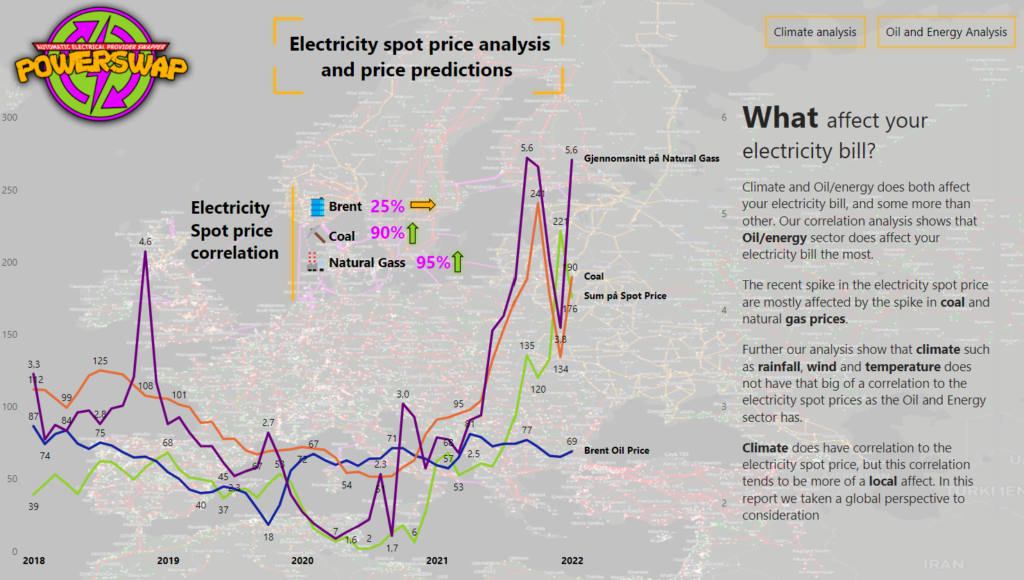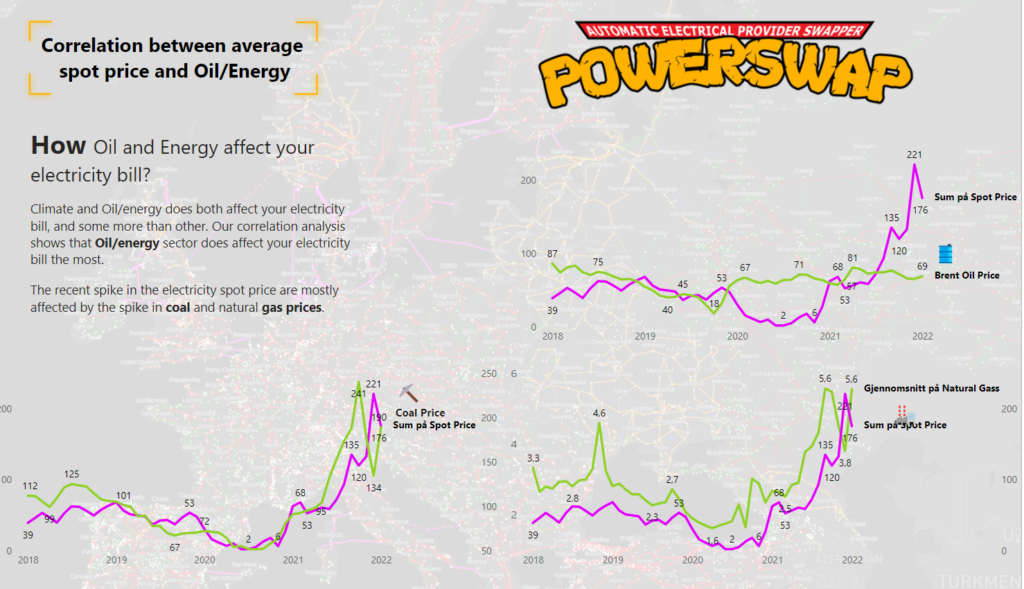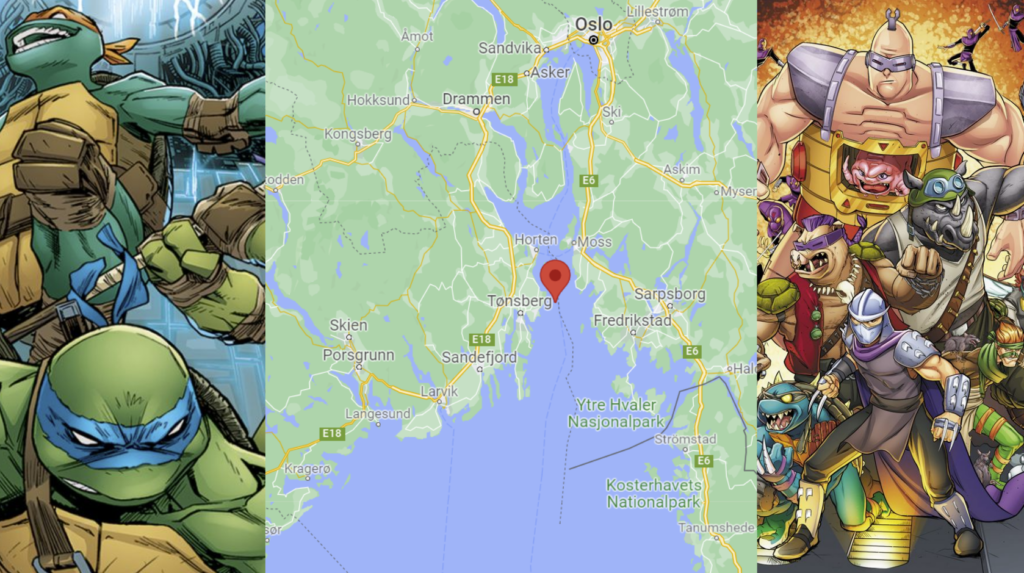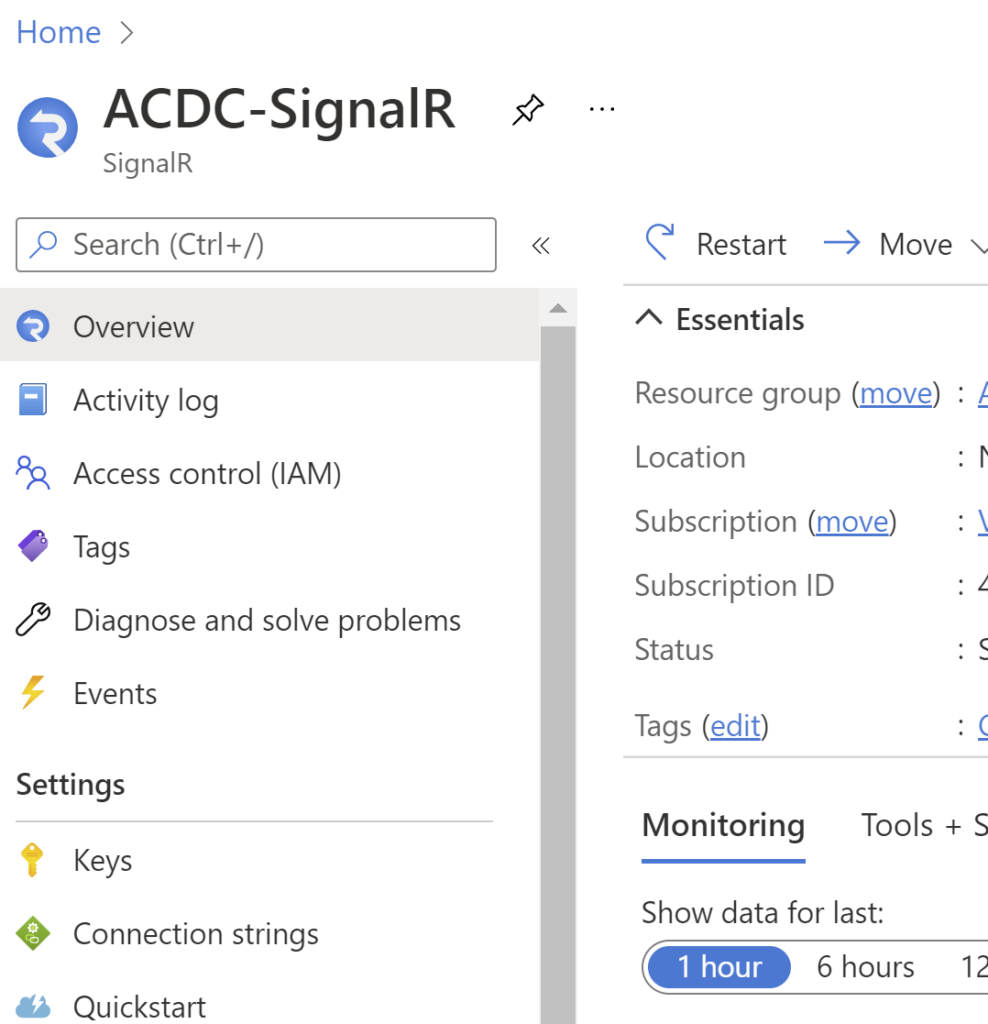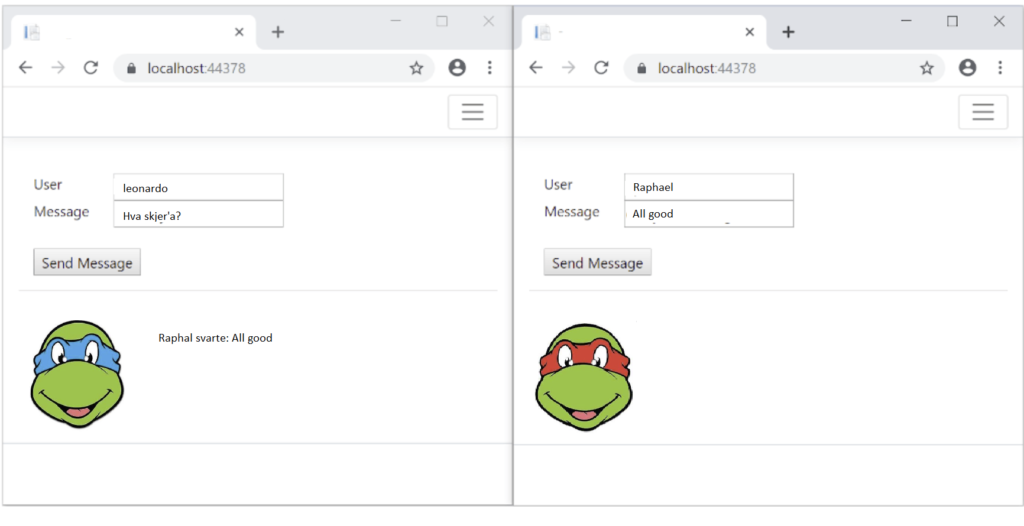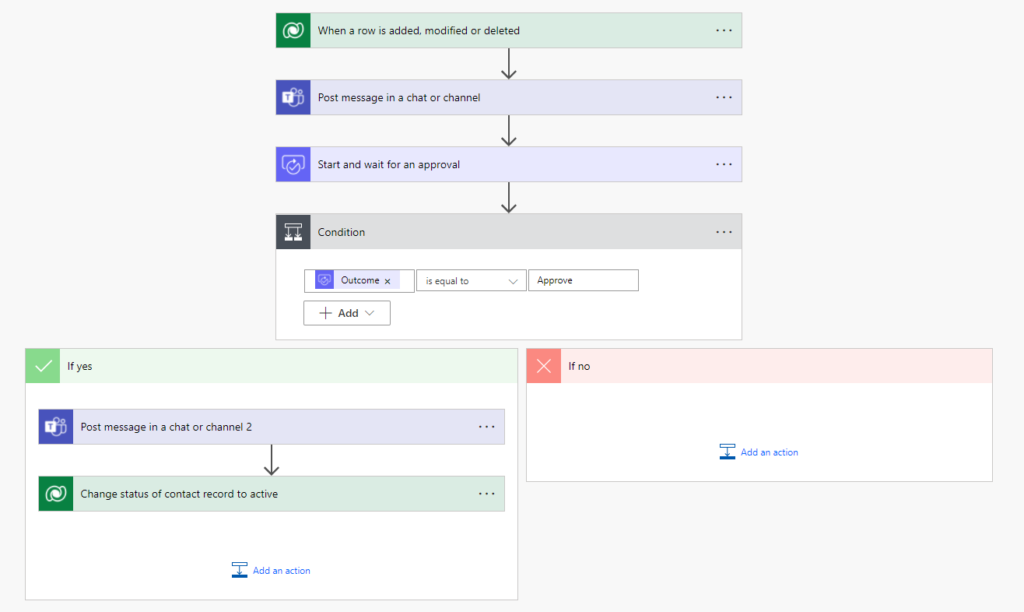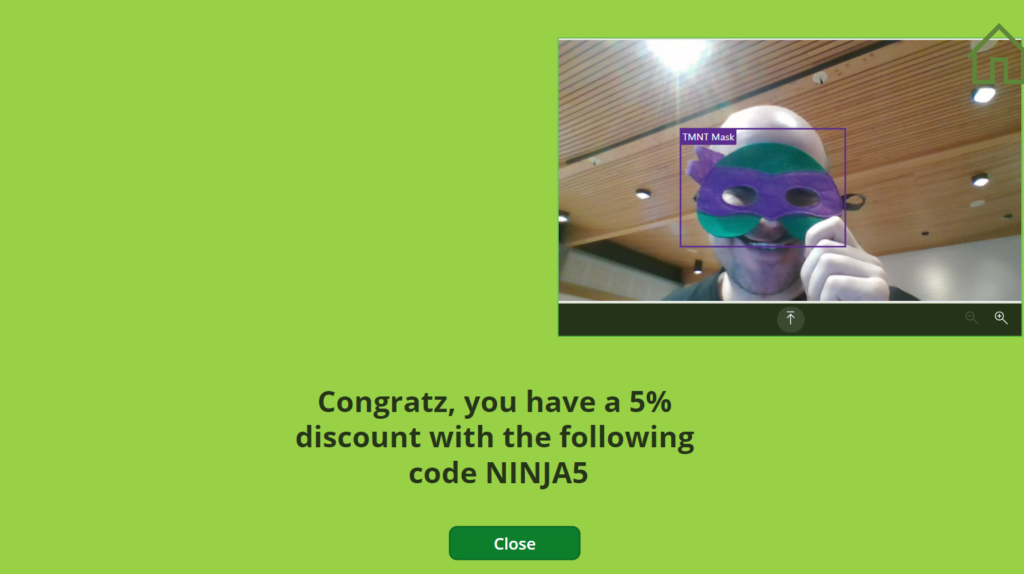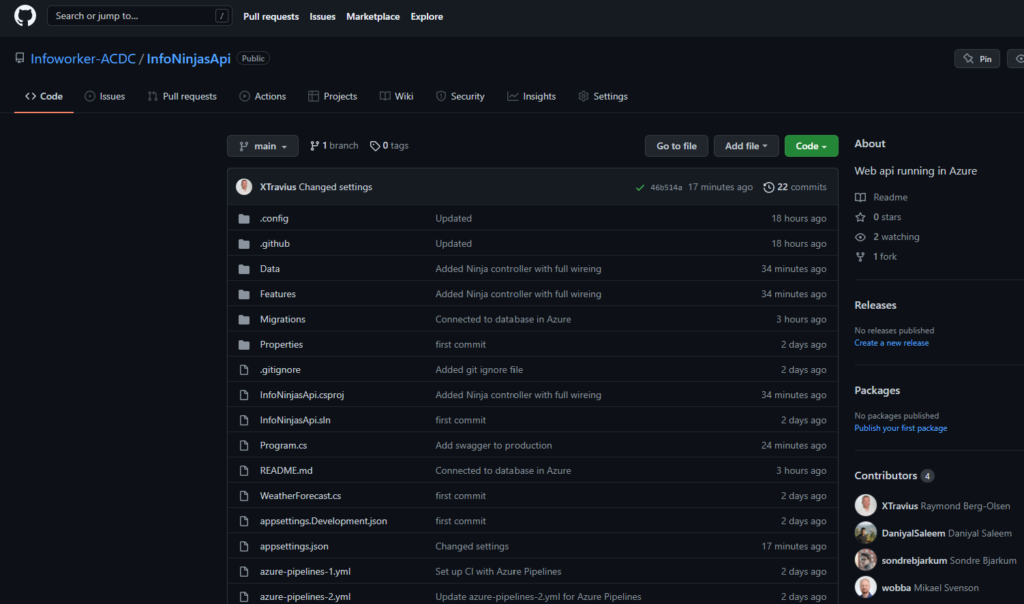Som del av prosjektet med å kartlegge trusler i Oslofjorden er det også viktig å kartlegge artsmangfoldet i fjorden for å vurdere hvilke arter som potensielt er truet og på den måten kartlegge risiko. I sensor-hubene har Bombshells satt inn kamera som trigges av sonarsensoren for å ta bilder av dyrelivet i området. Ved å bruke AI gjenkjenner vi ulike arter av skillpadder som potensielt vil være sårbare for vannforurensning og heve alvorlighetsgraden ved en hendelse.
Vi har trent opp en AI model i Power Apps til og identifisere tre ulike typer skilpadder, landskilpadder, havskilpadder og sumpskilpadder. Vi har matet AI med bilder av tre typer skillpadder i sine respektive miljø.
Vi bruker bilder for og trene modellen minimum 256 x 256 piksler som er kravet for og trene modellen. Bildet nedenfor viser hvordan bildene med ulike typer markeres og kategoriseres.
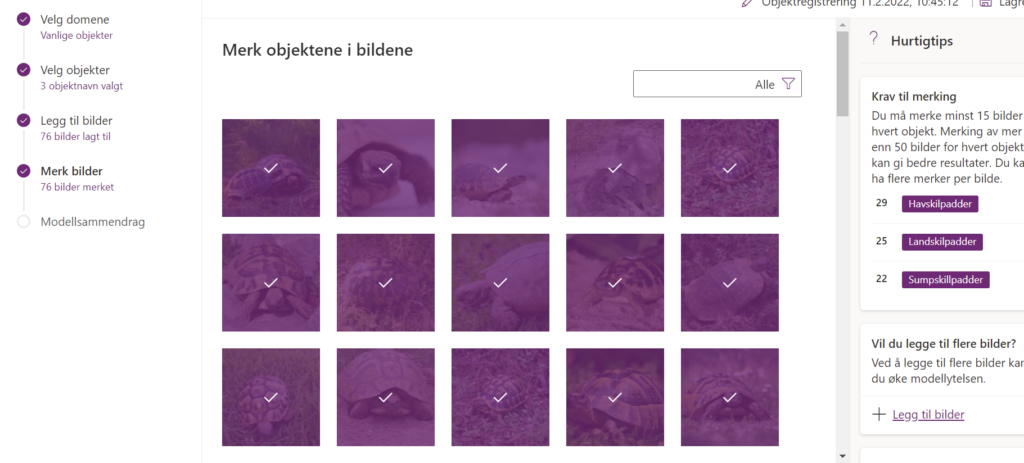
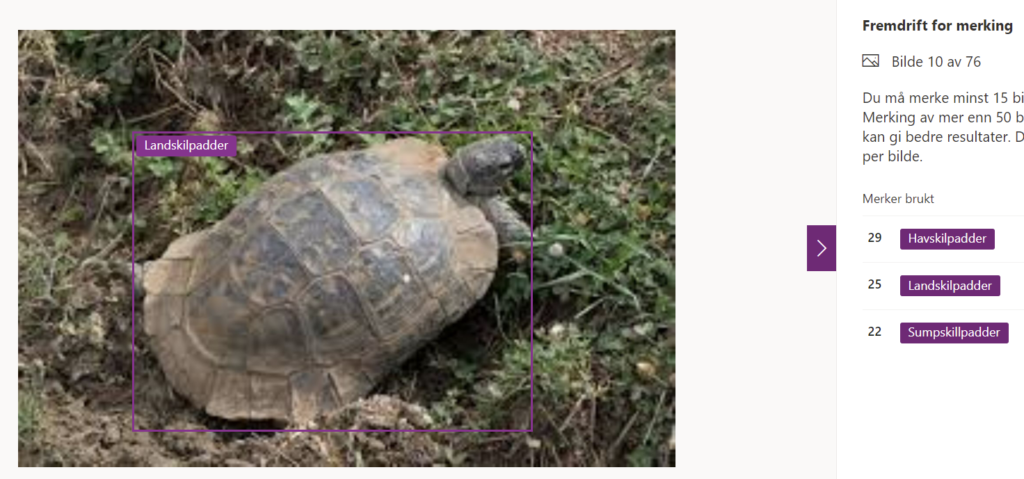
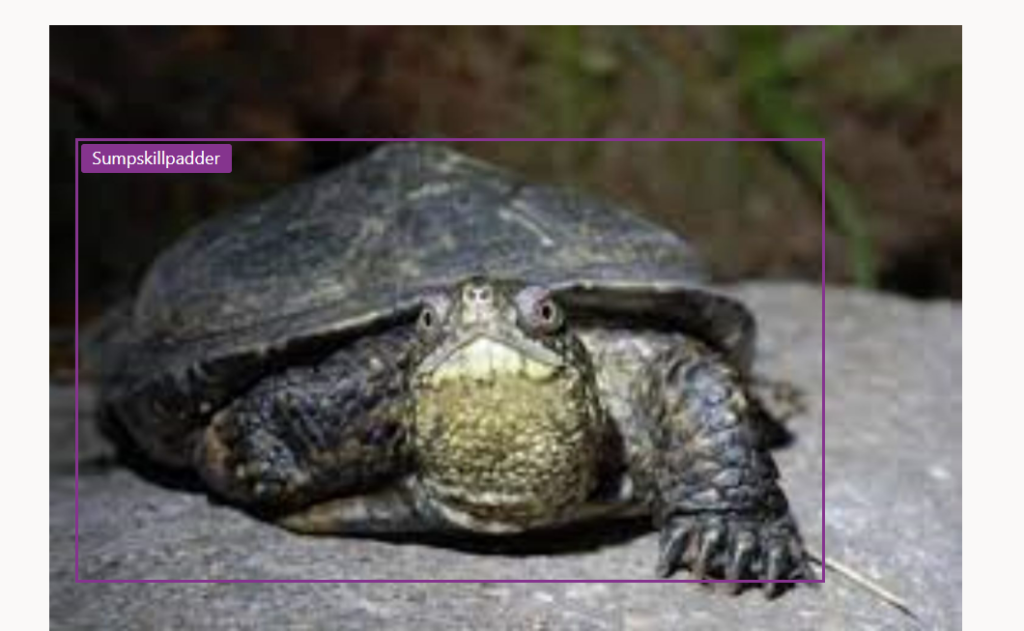

Etter vi har markert alle bildene vi ønsker og bruke som treningsgrunnlag, trener vi modellen og får en ytelse score. Her er den publiserte modellen etter den er ferdig trent.

Til slutt for å teste systemet har vi bygget en PowerApp som holder på en enkel komponent som laster inn et bilde og sender det til AI for identifisering. Resulatet vises i form av at et gjenkjent objekt markeres og betegnes med riktig kategori i grensesnittet, sammen med en score på hvor sikker AI er på at resultatet er riktig.

Kilde til risikoanalyse
Med disse dataene knyttet opp mot lokasjonsdata vil man kunne hente inn og sammenstille beregninger som brukes i risikovurdering av en hendelse.






